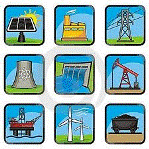Department of Agricultural Economics: Undergraduate Research
Date of this Version
Fall 12-19-2016
Document Type
Article
Citation
Op-Ed from ENSC 230. Energy and the Environment: Economics and Policy, University of Nebraska-Lincoln, Department of Agricultural Economics, Fall 2016
Abstract
As a nation we are starting a race against climate change, a competitor who has had a very long head start and only plans on picking up the pace. The Clean Power Plan has laid a blueprint to lower carbon emissions from fossil fuel burning power plants nationwide, a crucial step in recovering from decades of pollution. Meeting these goals will take years and greenhouse gasses will continue to accumulate throughout the process. Efforts beyond the scope of this plan must also be made in order to prevent emissions from sources not specifically addressed, namely sources of carbon that cannot be controlled at a single point. A largely unaddressed source of carbon emissions comes from the tillage of native grasslands which act as a great vault of carbon stored within the central United States.
The Great Plains once hosted native prairie grasses which covered roughly one third of the country. Since agriculture took hold in the area most of the original grasses have been cut and the soil has been plowed. The act of plowing these ancient prairie soils releases an immense amount of carbon which is stored in the soil. Between 2009 and 2015 fifty-three million acres of grassland were converted to cropland each year, an annual loss rate of 2%. In this amount of time an estimated 3.2 billion metric tons of carbon dioxide which had previously been stored in the soil was released. Each year the conversion rate increases, scraping away at what little grassland is left. The remaining grasslands of the Great Plains still act as a vault for carbon but are overlooked by most conservation efforts.
The Great Plains have been described as “one of the least protected places on earth” by the World Wildlife Fund, with an estimated 1-4% of original grasslands remaining. Monumental amounts of effort go into protecting more visually striking environments such as rain forests while one of equal importance is being eliminated right in the heart of America.
The prairie is a misunderstood ecosystem, and as a result its benefits are often ignored. These highly productive domains provide unbelievable biodiversity, environmental benefits, and wildlife habitat. The grasses which populate these areas quickly process carbon from the atmosphere and have deep penetrating roots, often 8-15 feet in length. These roots bury carbon deep underground where it can be stored for decades; 22.5 tons of carbon per acre can be stored in the roots alone, and 1.7 tons per acre can be moved to the soil every year. This storage is accumulative over time and moves carbon from the atmosphere to the ground continuously creating massive carbon deposits over the course of centuries. Prairies have the ability to store as much carbon below the ground as forests can store above the ground. When carbon is stored below ground it will remain locked there and be unable to enter the atmosphere.
Wetlands are also commonly found within prairies and are capable of storing as much as 68.6 kilograms of carbon per cubic meter while also providing benefits such as flood protection, water purification, and groundwater recharge.
The conversion of prairie to farmland can be attributed to federal incentives which provide premium subsidies to crop growers. These incentives lead ranchers to abandon the practice in favor of agriculture, tilling the land which once locked away vast stores of carbon. When done responsibly raising-grass fed cows allows for the conservation of a healthy grassland ecosystem while still maintaining an economic business. Without creating incentives to assure the survival of ranching native grasslands will continue to decline.
Protecting the remaining native grasses of the Great Plains is a sensible and benign way to secure a massive vault of carbon that will otherwise be released, counteracting the efforts of the Clean Power Plan. Solely focusing on reducing emissions from power plants will not be enough.
Included in
Environmental Indicators and Impact Assessment Commons, Natural Resources and Conservation Commons, Oil, Gas, and Energy Commons, Other Environmental Sciences Commons

